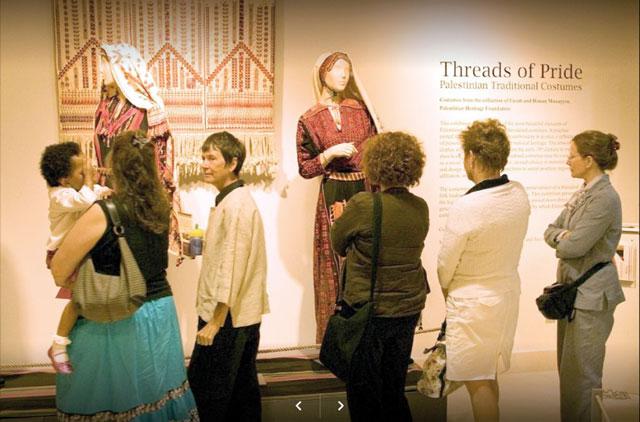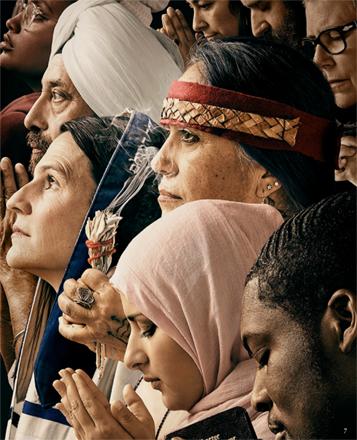You are here
Arab American Museum sheds light on cohesive diversity of Arabs
By Camille Dupire - Nov 29,2017 - Last updated at Nov 29,2017

The first and only museum devoted to Arab American history and culture in the US, the Arab American National Museum was launched in 2005 to 'document, preserve and present the history, culture and contributions of Arab Americans', according to its website (Photo courtesy of AANM)
AMMAN — “Fear drives confusion and hate and is bred by ignorance. The only way to counter hate is through education and culture,” said Devon Akmon, director of the Arab American National Museum (AANM) which was recently awarded for its work in promoting cultural excellence globally by TAKREEM.
Currently on an official visit to the Kingdom, the museum’s director highlighted the need to spread knowledge about Arab culture and “tell the story of Arab diversity” to foster a better understanding of the Arab world.
The first and only museum devoted to Arab American history and culture in the US, the AANM was launched in 2005 to “document, preserve and present the history, culture and contributions of Arab Americans”, according to its website.
“When I arrived to the US, I realised the persistence of negative stereotypes about the Arab and Muslim communities. This was a stark change compared to what I experienced during my life in Amman, where I was surrounded by a group of friends from Syria, Armenia, Lebanon,… who were from all walks of life and religious backgrounds,” Anan Ameri, the founding director of AANM told The Jordan Times over the phone.
“The issues encountered by Arab Americans are shared by all immigrants who came to the US, and this is why this museum is important for all,” she continued.
“There are a lot of Arabs or people of Arab origin in the United States, and we want to create a sense of unity among them, as well as with other communities,” Akmon told The Jordan Times in Amman, adding “our impact isn’t only focused on Arab communities, but on all of the minorities in the US.”
Citing a “critical time” in global affairs in general and American politics in particular, he stressed the need to enhance cohesion within and with the Arab population in the country through “a culture that brings us all together”.
According to the Arab American Institute, there are an estimated 3.7 million Americans of Arab origin currently living in the US, coming from 22 different Arab countries.
“The diversity of people living in the US is reflected in our traditions. For instance, we just celebrated Thanksgiving and, on the dinner table of our different families, you could find the traditional Turkey, along with hummus or couscous,” Akmon explained.
“Because we consider ourselves a ‘living museum’, we are very responsive to the public and to the events happening on a daily basis,” he said, noting that the AANM has recently held exhibitions on the refugee crisis, the travel ban and Syrian refugees in the US.
Referring to the current political situation, Akmon highlighted that the US has witnessed more hate crimes in the aftermath of the latest presidential elections than after 9/11.
“Before 9/11, I had never been confronted to racism or xenophobia on a personnal level,” Akmon, who is of Lebanese origin, recalled, adding “my mother and my sister though, because they have more ‘Arab looking’ features, started being subject to discrimination and prejudices. This is when I realised I had to do something”.
Aimed at dispelling misconceptions about Arab Americans and Arab culture, the AANM also seeks to spread knowledge about the culture worldwide, offering virtual tours and online experiences, Ameri said, noting that she receives lots of calls from Arabs living abroad telling her about their personal experiences with migration.
Located in Dearborn, Michigan, amid one of the largest concentrations of Arab Americans in the US, the AANM showcases exhibitions and presents a wide range of public programmes in cities across the US, encompassing topics as diverse as gender, identity, music, literature, among others.
In addition to the periodic events which are deeply linked to the latest geopolitical developments, the museum features two permanent exhibitions: one on the contributions of the Arab civilisation to science, medicine, mathematics, architecture, and the decorative arts, while the second focuses on the Arab experience in America.
Her Majesty Queen Noor is one of the honorary members of the museum.
Related Articles
AMMAN — His Majesty the late King Hussein on Saturday was awarded the “Legacy Award” at the TAKREEM awards ceremony, honouring “the father o
AMMAN — Director-General of the Arab League Educational, Cultural and Scientific Organisation (ALECSO) Mohamed Ould Amar on Saturday visited
AMMAN — The title of the exhibition “I Hear America Singing” at the National Gallery of Fine Arts might sound very sardonic at the moment, t














